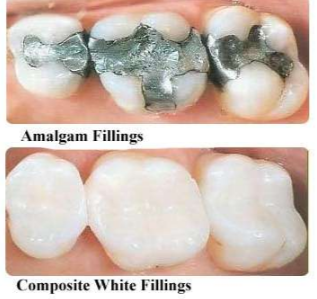During the past decade, there has been a lot of discussion about metal fillings and concerns about the mercury in them.
You can go back and forth reading arguments about mercury causing all sorts of side effects and arguments that mercury exposure from metal fillings isn’t significant enough to harm people.
In fact, according to The Guardian removing metal fillings often releases more mercury vapors than if you left them alone. Many dentists suggest leaving the fillings alone if they’re in a good condition and you don’t have any tooth decay underneath them.
What are metal fillings?
Also called amalgam or silver fillings, metal fillings are a mixture of silver, tin, copper mercury, and sometimes other metals. Dentistry has used this type of filling for about 150 years. The reason they contain mercury is because it makes the filling more malleable. It’s easier to press the filling into the tooth and afterward the metal hardens quickly. It’s also strong and helps fillings survive the wear and tear of chewing.
A disadvantage is that metal expands and contracts with cold and heat. This may cause the tooth to crack or fracture.
Alternatives to metal fillings
Tooth colored fillings, also called composite fillings are made out of resin material, which is a mixture of smooth glass particles and plastic. Dentists are able to match the resin to your tooth color so the filling isn’t noticeable in your mouth.
Composite fillings can strengthen your teeth because they bond to tooth structure. Other advantages include:
- Using composite resin to repair chipped or worn teeth
- Losing less of the tooth when the filling needs to be removed and when removing decay to prepare for filling
Disadvantages are that composite fillings are more expensive and less durable. In other words, they don’t last as long as metal fillings.
Dr. Baker is glad to discuss fillings with you and help you arrive at a decision about what type of fillings you want.







Recent Comments